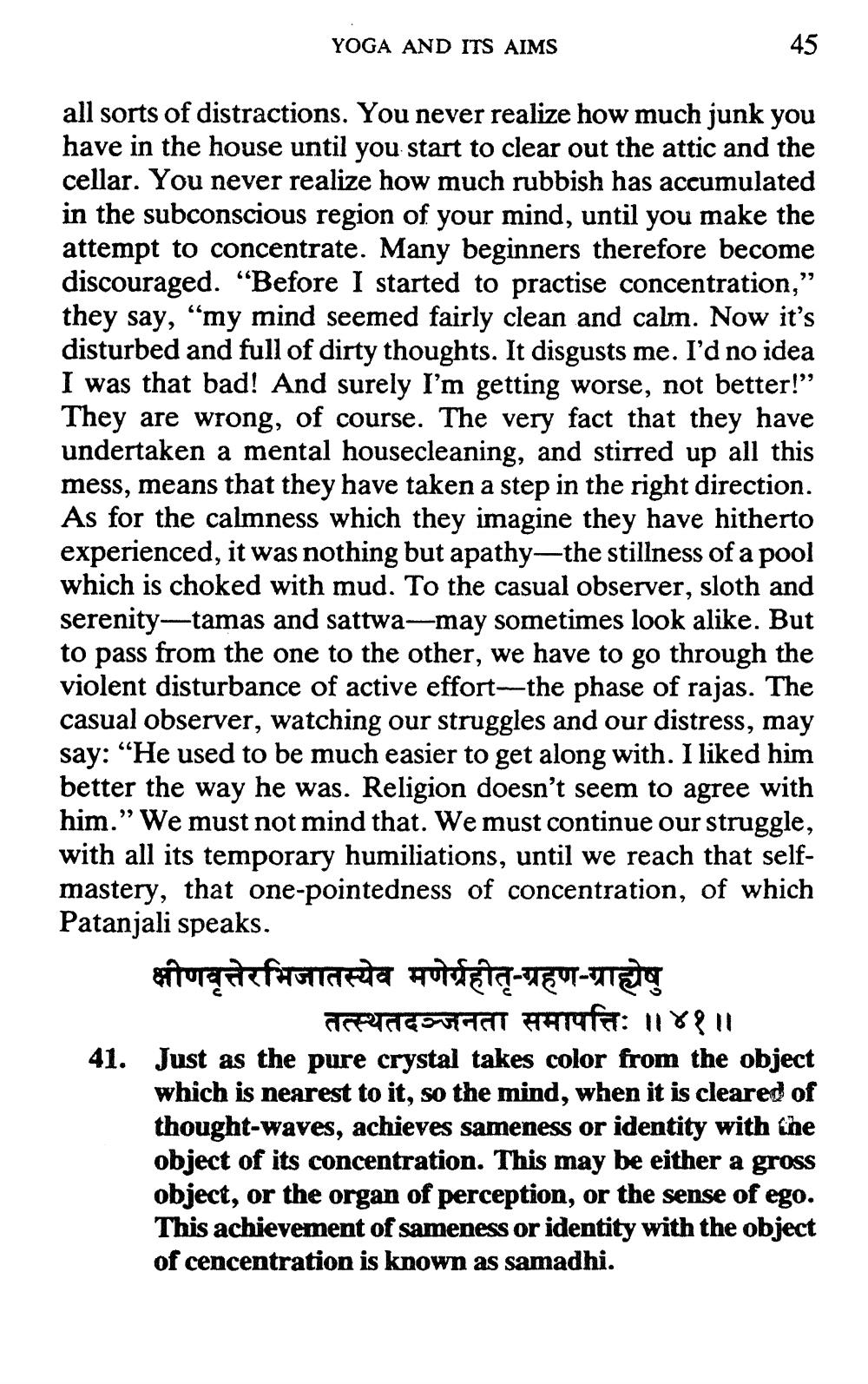________________
YOGA AND ITS AIMS
all sorts of distractions. You never realize how much junk you have in the house until you start to clear out the attic and the cellar. You never realize how much rubbish has accumulated in the subconscious region of your mind, until you make the attempt to concentrate. Many beginners therefore become discouraged. “Before I started to practise concentration," they say, “my mind seemed fairly clean and calm. Now it's disturbed and full of dirty thoughts. It disgusts me. I'd no idea I was that bad! And surely I'm getting worse, not better!” They are wrong, of course. The very fact that they have undertaken a mental housecleaning, and stirred up all this mess, means that they have taken a step in the right direction. As for the calmness which they imagine they have hitherto experienced, it was nothing but apathy—the stillness of a pool which is choked with mud. To the casual observer, sloth and serenity_tamas and sattwa-may sometimes look alike. But to pass from the one to the other, we have to go through the violent disturbance of active effort--the phase of rajas. The casual observer, watching our struggles and our distress, may say: "He used to be much easier to get along with. I liked him better the way he was. Religion doesn't seem to agree with him.” We must not mind that. We must continue our struggle, with all its temporary humiliations, until we reach that selfmastery, that one-pointedness of concentration, of which Patanjali speaks. क्षीणवृत्तेरभिजातस्येव मणेर्ग्रहीतृ-ग्रहण-ग्राह्येषु
TERTAIC SURGIGIT HATE: 118811 41. Just as the pure crystal takes color from the object
which is nearest to it, so the mind, when it is cleared of thought-waves, achieves sameness or identity with the object of its concentration. This may be either a gross object, or the organ of perception, or the sense of ego. This achievement of sameness or identity with the object of cencentration is known as samadhi.




